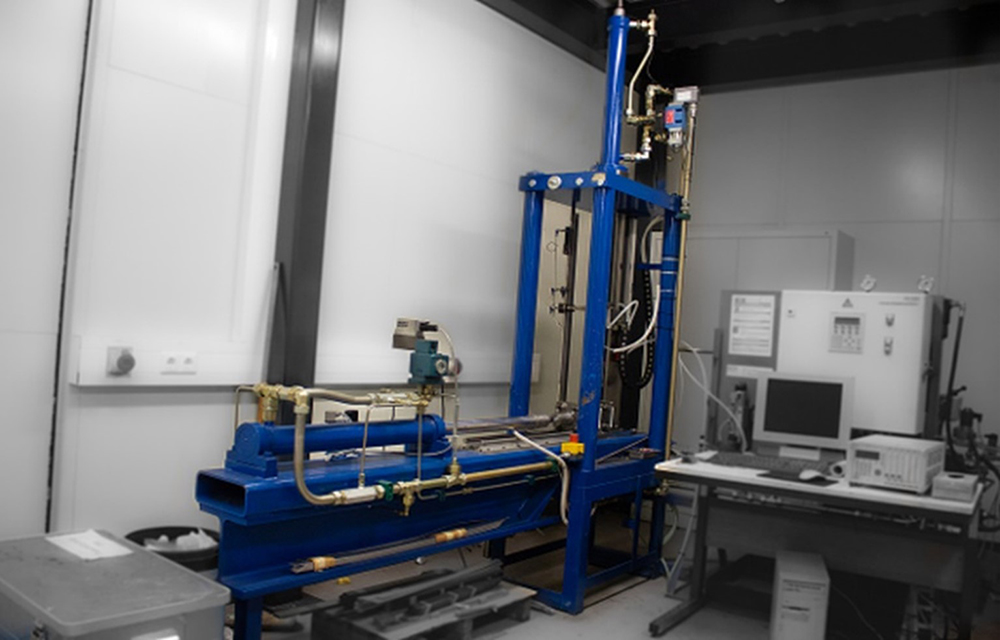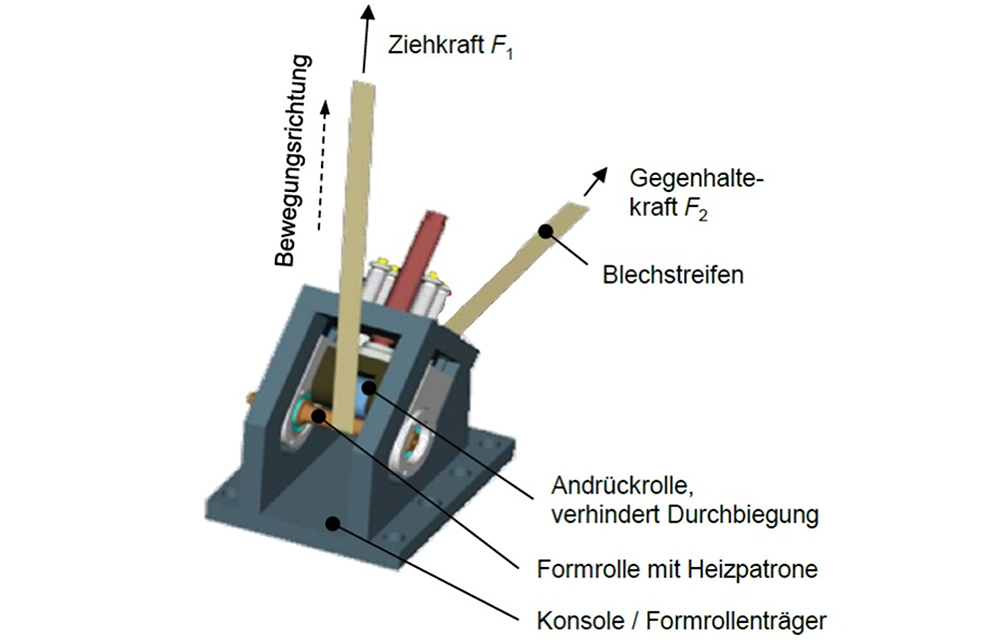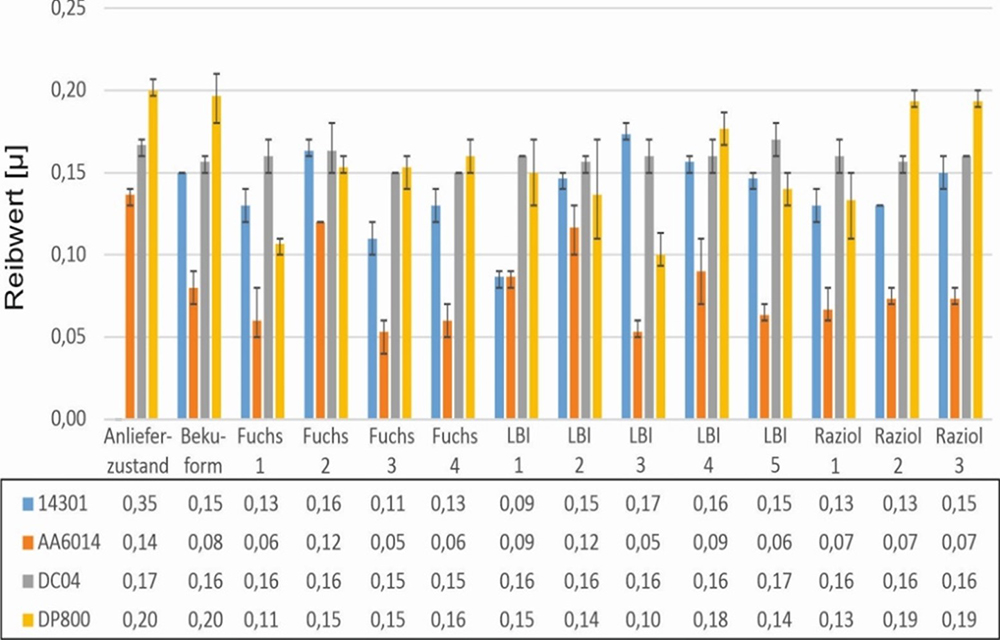Friction occurs in sheet metal forming, which contributes to tool wear. To reduce this wear, lubricants based on mineral oil are used. These are suitable for the high demands of forming technology because, for example, they are resistant to pressure and temperature. In combination with additives, the lubricants are optimally suited for the respective application.
Water-based lubricants and their potential
Mineral oils, however, have a number of disadvantages: These include the difficult cleaning of components, the disposal of the cleaning bath, and the difficult degradation in contact with the environment.
For this reason, IFUM is currently researching the applicability and process limits of water-based lubricants as part of the “Water-based lubricants” project of the European Research Association for Sheet Metal Working. In particular, the deep-drawability, wear resistance and weldability of these lubricants are being investigated. The results obtained are then transferred to an analytical-empirical model, which provides a statement on the respective friction condition. This makes it possible to select the appropriate lubricant for the particular application.
Water-based lubricants and their limitations
Water is already used as a lubricant in many areas of nature. In the human body, for example, all movements in which friction occurs, such as in the joints, are lubricated with water. However, due to its physical and biological limitations, water alone is not suitable for lubrication in an industrial environment and must therefore be additivated. For this reason, additivated lubricants based on mineral oil are currently mainly used in practice. Various manufacturers already offer water-based lubricants in their range. These lubricants are described as particularly sustainable because their disposal is unproblematic compared to mineral oil-based lubricants.
In the last decade, investigations have been carried out into the tribological properties of water-based lubricants. In order to use water as a lubricant, it is necessary to add additives that contribute to corrosion protection, viscosity increase and wear reduction. In most cases, polymers, esters and certain EP additives are added to the lubricants. The combination of various other additives with water has already been investigated in various research projects.
With regard to the suitability of water-based lubricants for sheet metal forming, little research has been carried out according to the current state of the art. Most investigations are limited to the use of various additives and their influence on the coefficient of friction.
Within the framework of this research project, the IFUM is conducting initial investigations into the suitability of water-based lubricants for deep drawing. In this context, strip drawing tests with deflection (see Figure 2) are used to simulate the different types of stress during forming and to determine the coefficient of friction. In the model test, a strip of sheet metal is pressed against a specimen and drawn by means of a specified drawing speed. During the drawing process, the drawing force is recorded. The coefficient of friction results from the quotient of the drawing force and the normal force. The lower the coefficient of friction, the better the result for deep drawing.
Comparison of water-based and mineral oil-based lubricants
In the strip drawing tests with deflection, the water-based lubricants supplied by the manufacturers LBI, Raziol and Fuchs were applied to an aluminum material and three steel materials and examined with regard to their lubrication performance. The mineral oil-based high-performance lubricant Bekuform 169 / V35 and an anti-corrosion oil, which was applied in the as-delivered condition of the sheet materials before transport, served as a reference. The initial strip drawing tests served to find the lubricants with the suitable friction values to be used for further tests. To ensure equal conditions, a defined lubricant quantity of 5 g/ m2 was applied to the sheet metal strips (20×700 mm).
The results (see Figure 3) show that the friction values of the individual lubricant-material combinations exhibit different trends. The measured friction values for the water-based lubricants in combination with the aluminum sheet range from 0.05 to 0.07. In combination with the steel sheet, friction values between 0.1 and 0.19 are achieved. In the measurements, the mineral oil-based lubricant Bekuform lies at 0.08 (aluminum) and 0.2 (steel).
Thus, in some cases, the water-based lubricants lead to better friction values than the mineral oil-based lubricants. In these initial investigations, the water-based lubricants impressively demonstrate that, tribologically speaking, they are in the same category as the mineral oils. In the further course of the project, these lubricants will be investigated for their forming, wear as well as welding performance.


